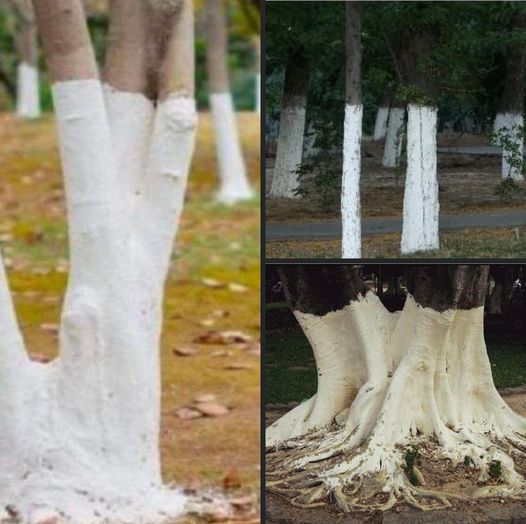Why Are Trees Painted White? The Surprising Reason You Should Know
In today’s world, the internet has become an essential tool for answering questions, big and small. From staying connected with loved ones to accessing information, it offers a wealth of knowledge just a click away. Gone are the days of searching through countless books or seeking out experts to find answers to uncommon questions. Now, almost any curiosity can be satisfied instantly online.
If you frequently visit our website, you’ve likely seen our articles explaining the meaning behind everyday curiosities. For example, we’ve discussed the significance of a large star on a barn or why some men paint one fingernail. But today, we’re focusing on something even more intriguing: trees with white-painted trunks.

What Does It Mean When Trees Are Painted White?
Recently, we came across a puzzling image of trees with their trunks painted white. Curious, we decided to investigate. It turns out, this isn’t just an aesthetic choice or random decision. Trees are often painted white, especially in winter, to protect them from sunburn. Yes, you read that right—trees can get sunburned!
It may sound strange, but just like humans can suffer from too much sun, trees are also vulnerable. During the day, sunlight heats up the tree’s bark, causing it to expand. At night, when temperatures drop, the bark cools and contracts. This rapid change in temperature can cause the bark to crack, potentially damaging the tree’s trunk.
How Does the White Paint Help?
This is where the white paint comes in. By reflecting the sun’s rays, the paint helps regulate the tree’s temperature, preventing the trunk from getting too hot during the day. In essence, the white paint acts as a protective shield, keeping the tree’s bark from overheating and splitting due to rapid temperature fluctuations.
Other Tree Markings You Should Know About
White isn’t the only color you might notice on tree trunks. For example, an orange dot could mean the tree is marked for removal, while a purple mark often indicates that the tree is on private property. Different colors and markings can reveal important information about the tree’s status or future.
Previously, we explored other unique tree phenomena, such as the curved trees found in some forests. Color-coded tree markings are another way nature—and those who care for it—communicate what’s happening in the environment around us.
Next time you see a tree with a white-painted trunk, you’ll know it’s not just for decoration. It’s a practical measure to protect the tree from damage caused by temperature changes, especially in colder months. Have you spotted trees like this in your area? Share your thoughts in the comments!





